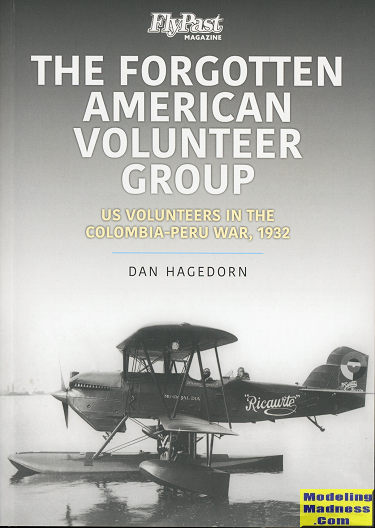 In the
1930s, Peru invaded a section of Colombia called Leticia on the border of
Columbia, Peru, and Brazil. Located along the Amazon river east of the Andes,
the area was quite remote with the only way of getting there by either boat or
by floatplane as there were no roads and no landing areas for planes. In fact,
it was so remote that it took days for the Colombian capital of Bogota to even
realize that the nation had been invaded.
In the
1930s, Peru invaded a section of Colombia called Leticia on the border of
Columbia, Peru, and Brazil. Located along the Amazon river east of the Andes,
the area was quite remote with the only way of getting there by either boat or
by floatplane as there were no roads and no landing areas for planes. In fact,
it was so remote that it took days for the Colombian capital of Bogota to even
realize that the nation had been invaded.
Such was the situation that sending a force of even
5,000 troops into the area as well as all the needed supplies and equipment
would have bankrupt the nation. The only way to fight this war was with very
small numbers of troops and with air power. Fortunately, Colombia had a small
air arm of mostly Curtiss-Wright aircraft and a German run national airline that
it could use to help forward deploy air assets so they would have a fairly close
operating base.
What this conflict did was to spur a buying spree by
Colombia and much of this book covers that aspect of
aviation the area. A few things to note. First is that most of Colombia's
military aviation was not controlled by Colombians but by the Germans who
operated SCADTA, the national airline. The result is that much of Colombia's
early purchases in the late 20s were German equipment, mostly Junkers aircraft.
Not surprising that the majority of pilots for the airline and military were
Germans as well. In fact, the Germans really didn't want Colombians to control
their military and so did not make a major effort to train local pilots.
This is where the US came into play. An American mission
was invited into the country and it was they who set up a proper pilot training
program and helped with obtaining modern aircraft; of US origin, of course.
These purchases are the major focus of this book. Of course, the Colombians
ended up with more planes than pilots who could fly them so looked to the US for
volunteers. Just like the AVG of a few years later, pilots were sourced from the
military and civilian services, paid handsomely, and flew (for the most part)
for just a short time before heading home with their loot. This was deep in the
Depression so these sorts of jobs were a real boon for both the pilots and the
manufacturers.
In this book, we get a brief on the conflict itself and
some of the major events. Frankly, there wasn't a lot of combat and while there
were casualties, they were fairly minimal as these things went. The whole thing
was eventually settled by the League of Nations. Then we get into the expansion
of the Colombian Air Force and the aircraft they purchased. There is a small
section on the US volunteer pilots and some of their exploits while in Colombia.
Then we get a look at the other side to some extent and the aircraft and
training of the Peruvian Air Force.
The book is well researched and the types of aircraft
are nicely illustrated by period photos of these planes in service. Colombia and
Peru concentrated on water-borne aircraft as a matter of need so we get to see
some pretty exotic aircraft on these pages. The prose flows well and makes for
enjoyable reading. In all, it is a very well done edition that I'm sure you will
like.
February 2022
Copyright ModelingMadness.com. All rights reserved. No
reproduction in part or in whole without express permission.
Review book courtesy of
Casemate Publishing.
You can get yours today
from this link.
If you would like your product reviewed fairly and quickly, please
contact
me or see other details in the
Note to
Contributors.
 In the
1930s, Peru invaded a section of Colombia called Leticia on the border of
Columbia, Peru, and Brazil. Located along the Amazon river east of the Andes,
the area was quite remote with the only way of getting there by either boat or
by floatplane as there were no roads and no landing areas for planes. In fact,
it was so remote that it took days for the Colombian capital of Bogota to even
realize that the nation had been invaded.
In the
1930s, Peru invaded a section of Colombia called Leticia on the border of
Columbia, Peru, and Brazil. Located along the Amazon river east of the Andes,
the area was quite remote with the only way of getting there by either boat or
by floatplane as there were no roads and no landing areas for planes. In fact,
it was so remote that it took days for the Colombian capital of Bogota to even
realize that the nation had been invaded.